One day in Luanda
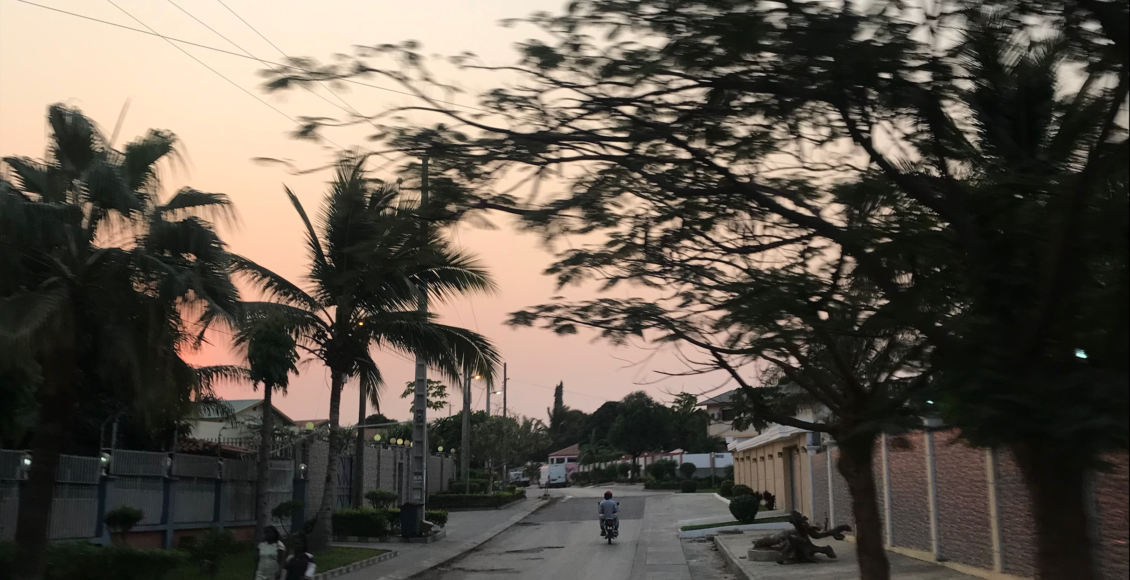
My first visit to Angola was for my grandfather’s funeral. I was eight years old. My memories from that time are blurry, but I can vaguely recollect the religious ceremony: I remember the fabulous collection of flowers gently placed down at the foot of the open coffin that I dared not approach. I can vividly recall the muggy weather of that afternoon; the tropical downpour made my hair frizz, tirelessly pouring rain until dusk. It was as if the clouds were crying too. Unfamiliar faces surrounded me; most were probably my cousins, my aunts and uncles, but at that time the only language I spoke was French, leaving me with nothing more than a smile to communicate with my lusophone family.
Eleven years later I returned to Luanda, the country’s capital, to reconnect with my family and also to satisfy my curiosity about the changes that Angola might have undergone in my absence.
It was 10 pm when I landed on the tarmac of Luanda’s international airport “Quatro de Feveiro.” The name of the airport, which translates to “the 4th of February” is a reference to the official start of the Angolan armed conflict against the Portuguese occupiers in 1961. My grandfather was an original member of the independence party, the MPLA (People’s Movement for the Liberation of Angola), so I grew up hearing fragmented stories about the Angolan struggle. Colonized in the 16th century, Angola gained its independence from Portugal in 1975. The independence movement was led by nationalist leader Augustino Neto, who then established the communist dictatorship which ruled until his death in 1979. Eduardo Dos Santos naturally succeeded him and governed the country for 38 years without interruption thanks to clever constitutional modifications. In 2017, Jao Lourenco won the presidential elections and took on the heavy-duty of transition. He has since declared war against the corruption and nepotism that flourished under the Dos Santos era. Second largest oil producer and the fourth-largest producer of diamonds in Africa, Angola is a resource-rich country attracting all kind of foreign investors but whose population remain poor with a GDP per capita estimated around 4,095$US in 2017.
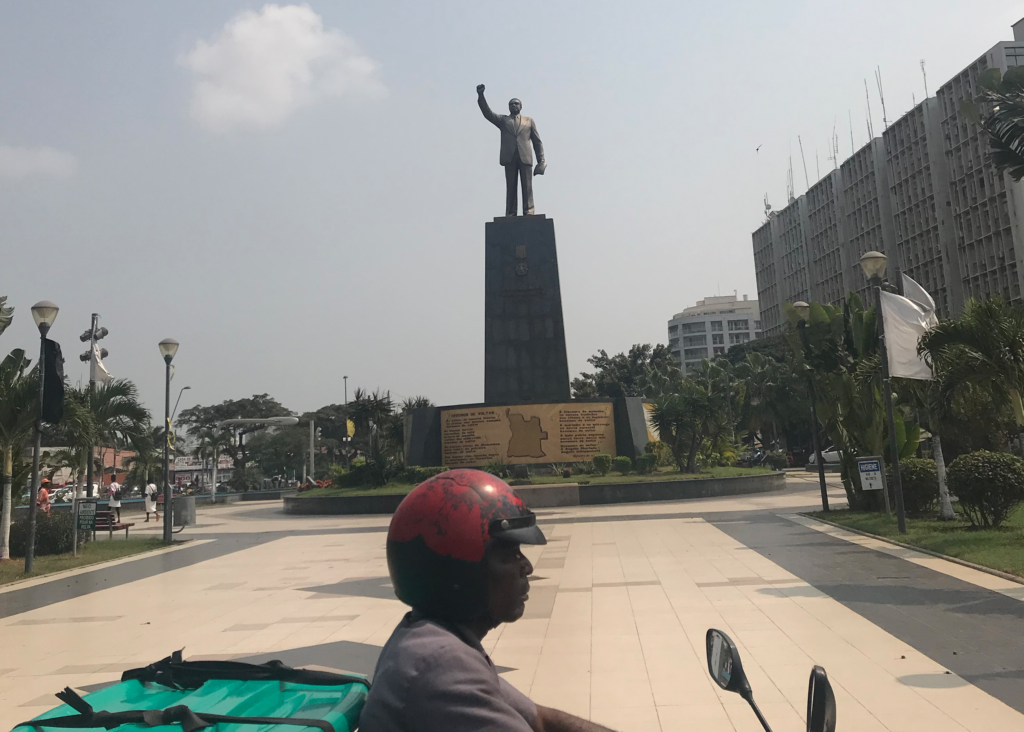
Welcomed by my grandmother and my two uncles, I was happy to find the unforgotten, peaceful atmosphere of Luanda by night. The only lights that remained were those of small shops quietly closing. At home, dinner was already served: my plate was filled with chicken stew, fundji (puree made out of cassava flour), plantains, and okra. I treated myself to a passion fruit flavoured Blue, the national soda brand of Angola, while my grandmother discussed the many plans she had in mind for me.
The next morning, at 8 am, I awoke with excitement, ready to tackle what will surely be a busy day. Briga, my grandmother’s driver, starts the engine, and I jump into his car, my only means of transport for the duration of my stay. A car is more than necessary to travel in Luanda, where public transport infrastructure or sidewalks on major traffic routes are only distant ideas. The main alternative for Angolans who do not possess a car is to rely on taxis; the famous blue and white Toyota minibuses which are emblematic of Luanda’s “confusaõ” [ndlr: the confusion, the heavy traffic], at least according to my cousin.
Between large highway lanes and tiny alleys, we finally arrive at the beginning of the “Marginal,” a lovely walkway adorned by palm trees in the heart of the city centre, which goes along the Atlantic ocean. At night, it is bustling with young bands, couples, joggers and street musicians. As we walk further on the pathway, I noticed many skyscrapers, many more than I remembered from my last visit to the city centre in 2008. Three or four were under construction, revealing the economic boom of the business industry. Their cold and vertical architecture sharply contrasts with the colourful hand-painted little stores that make Luanda’s charm.
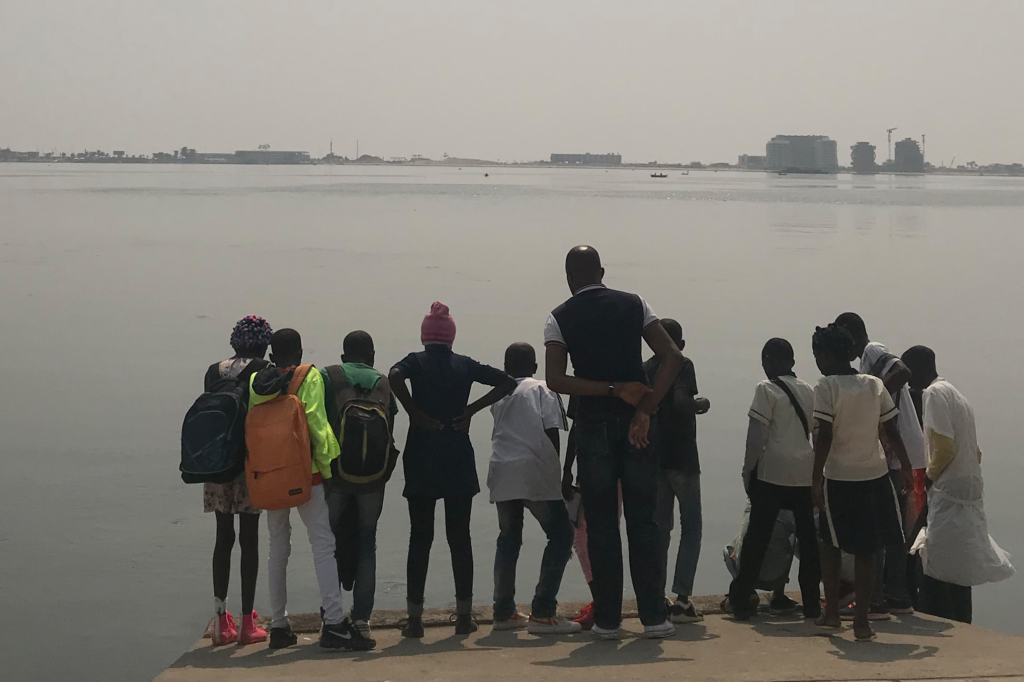
From the Marginal, we observe the “Fortaleza” looming on the hill, an imposing building of Luanda’s military history, overlooking the city. My aunt pointed at the bottom of the hill to show me a huge newly built mall, called “Fortaleza Shopping.” She explains to me that she boycotts these new shopping centers, which she believes damages Angolan culture. “Fortaleza is a museum. Not a mall” she tells me, “We cannot mix up everything.”
Skyscrapers are not the only buildings reshaping Luanda’s skyline. Shopping centers are also being built at a fast pace in order to satisfy the growing middle class’ needs, strategically boosted by the omnipresence of marketing. Advertisements for drinks, in particular, amazes me, as beers and globalized sodas are overpoweringly prevalent. Considered as luxury goods under Neto’s authoritarian regime, these drinks are now being democratized and made available to the masses and their growing salaries. In these mega-marts, the white neon lights contrast with the saturated colours of the articles and the aisles seem infinite as entire shelves are filled with dozens of the same products carefully aligned with one another. If it wasn’t for the plantains and magnoc overwhelming the vegetable section, I would not have been able to distinguish this supermarket from a Western one, especially since I noticed that a lot of products were imported, notably from Portugal.

Back in the car to drop off the groceries at home, we are stuck in traffic. While we are slowly moving forward, a flurry of seemingly randomly merchandise wisps between vehicles, carried by street sellers. These vendors walk up to our car and offer us the “Journal do Luanda”, fire extinguishers, soap, phone chargers, coconuts, mosquito repellent and even leather car seat covers. My grandmother decides to go for a soap that she did not find in the supermarket. The transaction is fast and efficient.
Just before lunch, I find myself in need of cash. I ask Briga to help me find a bank or a cash converter in the city centre to change my American dollars. He responds with a smile and drives. He stops in the middle of the road and starts speaking with two women on the sidewalk selling phone card recharges, used to call, text and access the Internet. He then asks me to show my one hundred dollar bill. One of the women curiously approaches to look at it. She thinks a little bit, and with a mischievous smile offers a price in kwanzas. She already knows Briga is going to negotiate. When they finally agree on a deal, the woman vanishes and reappears a few minutes later with 47,000 kwanzas, which she quickly places in my hands. This was 13,000 kwanzas more than I expected, as I had anticipated receiving 34,000 kwanzas based on what my currency converter application told me on my phone. Briga winks at me. As we head on our way, the exchange left me wondering about so many things, but especially the forthcoming business that these women will have with these American dollars.
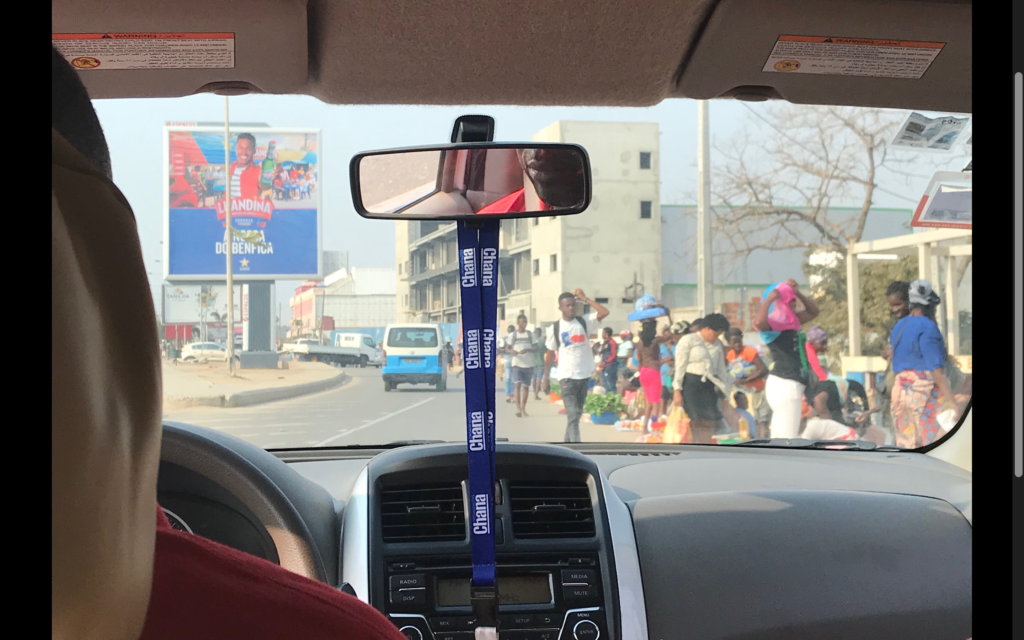
Later, around 1 pm at the elegant Hotel Tropico, my grandmother and I meet one of my grandfather’s old friends, a retired Ambassador of Angola. He was also fascinated by the street vendors’ potential; he explained that he once asked three people why they would not organize themselves into a bigger network to open legal businesses. They laughed at him and explained that they had no intention to do so since informality was far more advantageous. As I wondered why women are overrepresented in this informal economy, he tells me it is mostly because old patriarchal norms have obstructed their rise into the mainstream economy.
During dessert, while my grandmother is sharing old memories, I scanned the hotel’s luxurious decor. I notice that the majority of the clients are Westerners and Lusophones, probably from Portugal or Brazil. At that very moment, I recalled the different magazines that nominated Luanda as the most expensive capital in the world in 2017, and my subsequent confusion after reading these articles. Back then I wondered how Luanda could possibly be more expensive than cities like Paris, Hong-Kong, or Tokyo? Now I finally understood. Luanda had been nominated as the most expensive city by the expatriates that lived there because their lifestyle was far different from that of the locals. Originally, the city was not perceived as attractive for highly qualified westerners, who often preferred to work in fully developed cities. Therefore, companies started offering higher salaries in order to raise the demand for jobs in Luanda. With wages comparable to the Western world and a multiplied purchasing buying power in Angola, Western expatriates moved into brand-new apartments in the city center to spend their money in luxurious malls where prices are similar to the ones in Europe. The city has well adapted to this clientele over time. High-standard lounges, luxurious hotels and restaurants progressively took on the lovely “Ilha do Cabo” [island of Luanda] located at the shore of the capital city. Fancy thatched huts designed for tourists now display excessive prices, disconnected from the local economy. Living in constant luxury, driven by their chauffeur, and fed by their cook: expatriates in Luanda live in a bubble for which they pay the price.
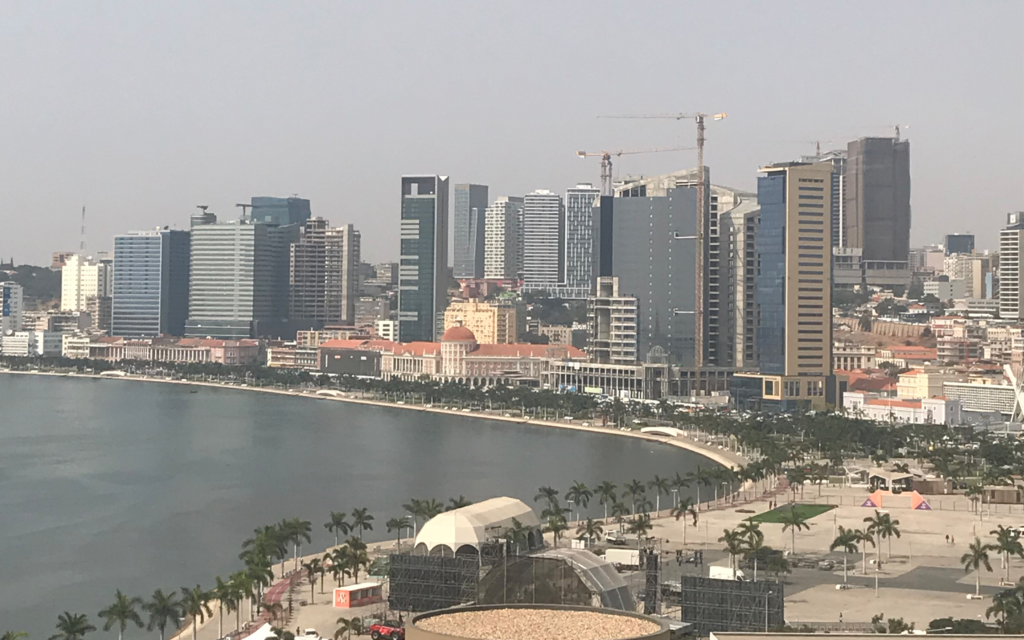
Europeans are not the only ones moving to Angola. Through the intensification of Sino-African relations that have endured for more than a decade, Chinese expatriates have progressively established themselves in the capital city, working in construction and infrastructure projects developed by Chinese firms. However, in opposition to the Europeans, they hang around the periphery of the city, away from the agitation and the traffic. Driving back home with Briga, we found ourselves in an empty neighbourhood full of new residences, kept under tight surveillance with a huge fence blocking any entry. Nearby, there were many shops, some still under construction. I could not resist the urge to visit one of the supermarkets. The cashier was surprised to have non-Chinese customers and insisted that both my grandmother and I left our purses at the entrance. I discovered that almost all the products inside had been imported from China: dumplings, sauce, biscuits, etc. all of which were being sold at, again, a price much higher than the local ones. Living in the periphery, Chinese residential neighbourhoods are virtually removed from the rest of the city.
At the end of the afternoon, we finally made our way home, a quick intermission before heading over to my cousin’s birthday that night. My aunt is giving us a ride. She drives carefully, afraid of the many holes of the road. “If I could do one thing in Angola, it would be to fix the roads,” she tells me in an exasperated tone. A few metres further, we pass by a group of 5 children in uniform returning from school, led by the oldest who seemed to be less than 9 years old. On the other side of the street, another group of little boys in rags arrive at their level and seem to pick up scrap heaps on the side of the road, probably to sell them. The contrast is strong: from their young age, the dice of their destinies seem to be launched forever.
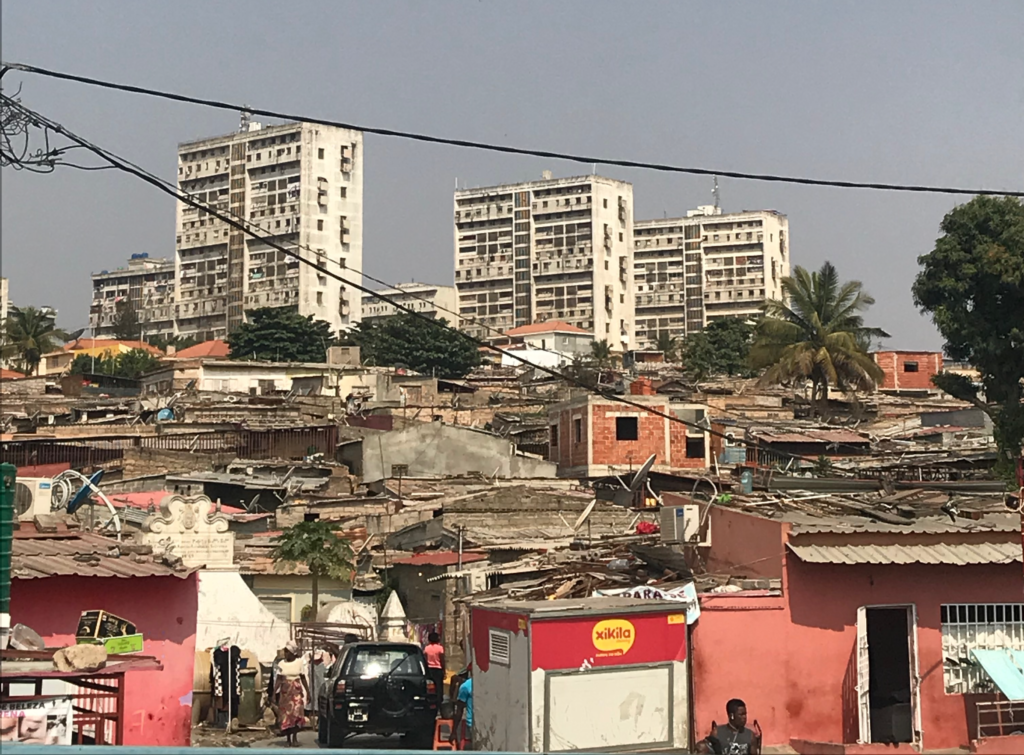
We are among the first guests at the reception. While waiting, I listen attentively to the discussion of two elderly men, noticing the ubiquity of politics in conversations here. Colonization, independence, Dos Santos, Lourenco’s transition: we criticize, we correct, we do not agree, we reformulate… Two or three people join the conversation. Everyone seems to know what Angola needs to do better. Diversification of the economy, better infrastructure, a public transport service, and more efficient health services, the list goes on and on. One man just came back from Namibia, where he stayed for three months to get his leg treated. “There, life is simpler,” he says, “everything is just more organized.” For highly specialized medical care, only a tiny portion of Angolans can afford to travel abroad in order to obtain the appropriate treatment, thereby reinforcing social inequalities. A woman tells me she had lost hope: “If there is a better future for Angola, I know I won’t see it. Maybe my children or grandchildren.” Others are convinced of the opposite and cite the many resources of the country: oil, uranium, diamonds, gold, etc. while acknowledging Lourenco’s efforts against nepotism. Though these efforts seem to bring a lot of hope to the Angolan people, few actually notice a change in their daily lives. “You have to be patient and wait for the transition efforts to be reflected in the institutions, that’s all” an elder advises us, whose age and years of government work gives him the credit and legitimacy to conclude.
As the discussion comes to a close, the garden fills with guests ready to celebrate my cousin’s birthday. The sun sets on Luanda and the sky is mauve-coloured. Some couples start dancing in the middle of a guests’ circle as romantic kizamba music breaks a polite silence.
This is how my journey in Luanda came to an end. It taught me that the future for Angola is far from certain. The slow improvements of Lourenço’s government have contributed to a growing delusional sentiment in politics, but I refuse to be pessimistic; each person I met showed me creativity, determination, and potential to foster change. The problem does not lie in the lack of intentions/incentives, but rather in the extractive nature of the economy, unable to sustainably answer to the social needs of an increasingly inegalitarian population. I know my grandfather fought for something different. I know he believed in a free, democratic and equal society for his country. But this trip also made me realize these aspirations remain alive in Angolans’ minds and that sooner or later, history will do justice.
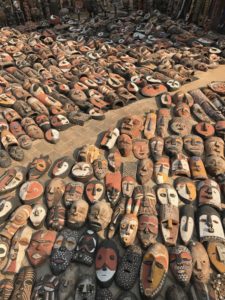
Edited by Alec Regino
